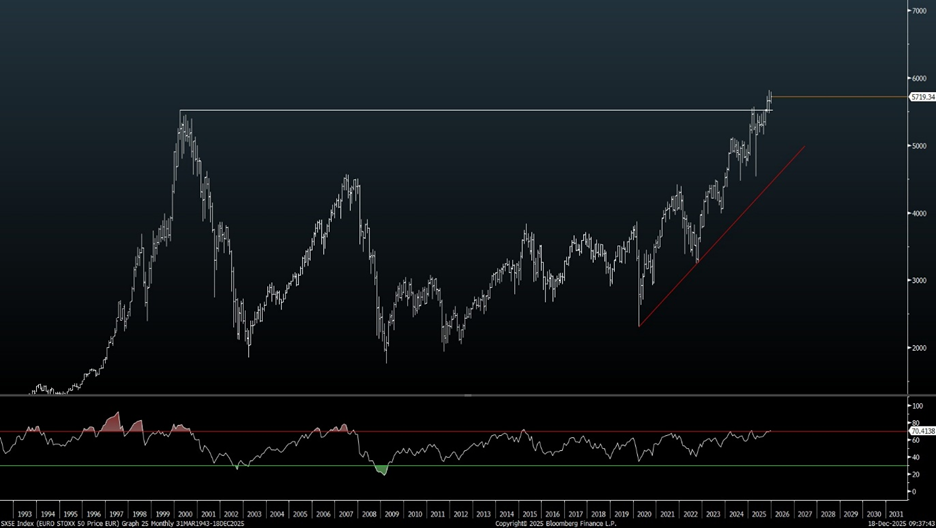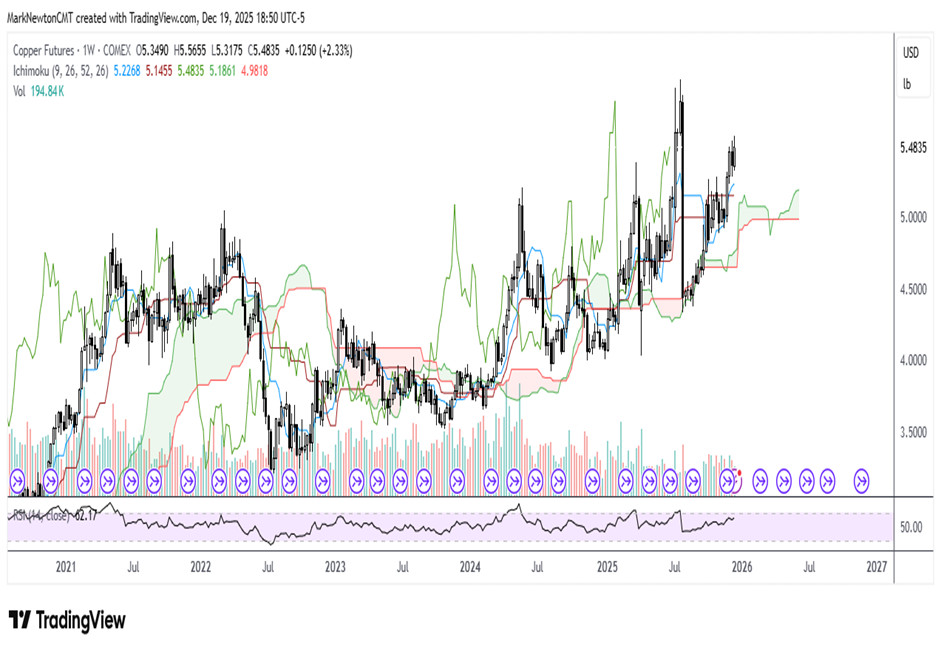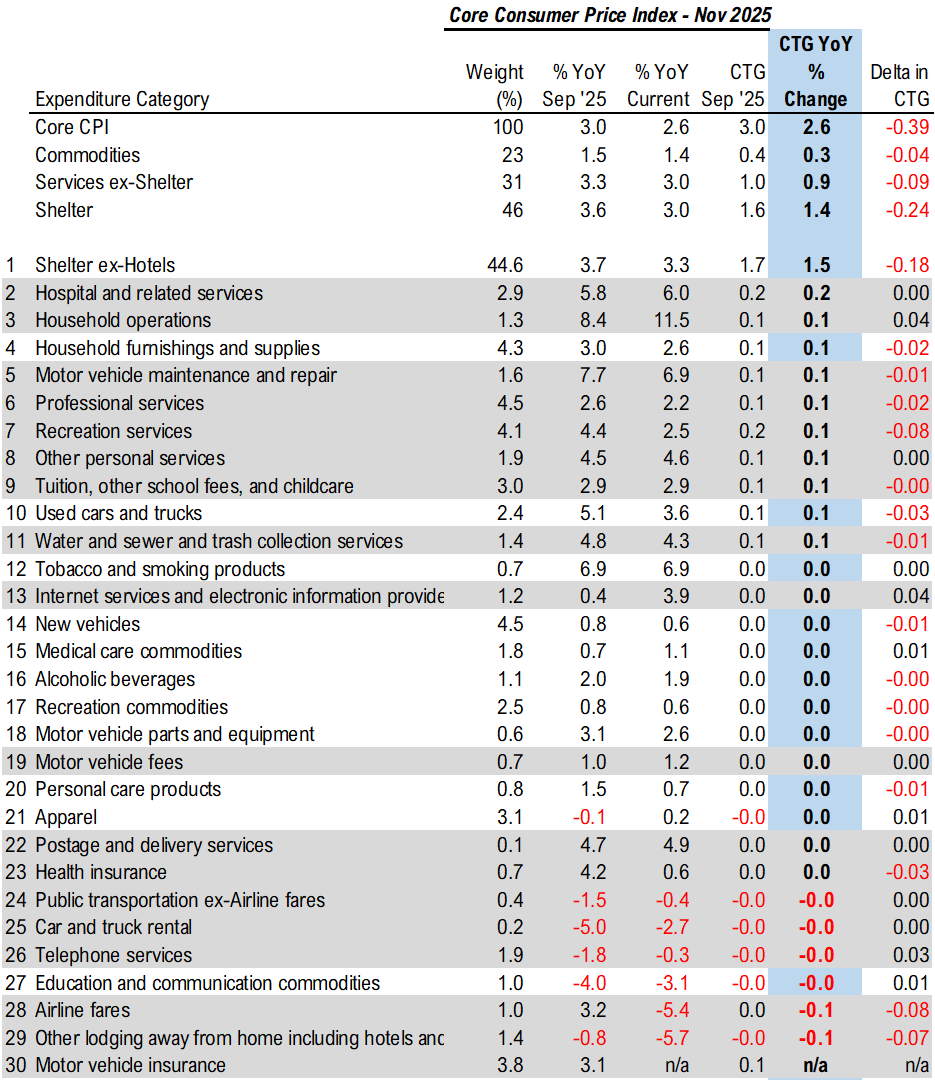Client Portal
Data Center
Access our research through the lens of our charts and tables. View all of our charts (sorted by publishing date) on the left, and click on any chart to read the report in which it appeared.
Select the image you are interested in to load the corresponding report in the content section. This intuitive layout ensures that you can easily find and view reports based on their visual thumbnails.
-

Magnets, Megawatts, and Monarchs: a Partial New Tech Roundup of 2025
Sat, December 20, 2025 | 3:00PM ET -

Magnets, Megawatts, and Monarchs: a Partial New Tech Roundup of 2025
Sat, December 20, 2025 | 3:00PM ET -

Magnets, Megawatts, and Monarchs: a Partial New Tech Roundup of 2025
Sat, December 20, 2025 | 3:00PM ET -

Tech rally sufficient to keep the Holiday-rally dream alive
Fri, December 19, 2025 | 8:17PM ET -

Tech rally sufficient to keep the Holiday-rally dream alive
Fri, December 19, 2025 | 8:17PM ET -

Tech rally sufficient to keep the Holiday-rally dream alive
Fri, December 19, 2025 | 8:17PM ET -

Tech rally sufficient to keep the Holiday-rally dream alive
Fri, December 19, 2025 | 8:17PM ET -

Tech rally sufficient to keep the Holiday-rally dream alive
Fri, December 19, 2025 | 8:17PM ET -

Stocks See Improved Breadth as They Edge Up for the Week
Fri, December 19, 2025 | 7:21PM ET


Kent Fung
Magnets, Megawatts, and Monarchs: a Partial New Tech Roundup of 2025
The final December issue of Signal From Noise is always devoted to scientific and technological advances that caught our attention throughout the year – innovations that made us sit up and take notice, even if we didn’t necessarily view them as important signals for investors at the time. In previous years, we’ve talked about an upcoming gene-editing treatment (now available), advances in training robots, and supercomputing. We also discussed a possible enzyme that could let us indulge (or even overindulge) in sugary snacks with minimal consequences, experimental tech to promote faster wound healing, and DNA computers.
We continue this yearly tradition.
Satellites in Space
William Gibson’s seminal 1984 novel Neuromancer (soon to be a series on Apple TV+, incidentally) was credited with introducing terms like “cyberspace,” the matrix (in its computative connotation), and ICE (Intrusion Countermeasures Electronics). Central to the plot were fully self-aware, near-omnipotent artificial intelligences – in space. Over four decades later, reality is starting to catch up.
In August, a Redmond, Wa.-based startup called Starcloud launched a satellite running on an Nvidia (NVDA4.04% ) H100 chip. Though it will have just one processor, that processor will nevertheless be 100 times more powerful than any processor on the International Space Station and be capable of running Google’s Gemma (a lightweight, open-source AI model not to be confused with the company’s Gemini models).
The Starcloud satellite (the first of many planned by the company) will likely have plenty of company soon enough.
Axiom Space plans to launch free-flying orbital data centers in the next year or two, and many familiar Big Tech names (Elon Musk, Jeff Bezos, Google (GOOGL1.66% ), Anthropic, and its former CEO Eric Schmidt, etc.) have similar aspirations. As Jack Clark, co-founder of Anthropic, responded when asked about the idea during a hearing of the Senate Armed Services Committee, “We’re big fans of putting computers in space.”
The appeal is obvious: Orbiting and space-based data centers can be more easily powered by solar power, and the remote location provides advantages for physical security. It’s an idea that has global appeal, including from allies in Europe and from rivals like China. Yet there are significant engineering challenges, such as how to dissipate the heat generated by processors in the vacuum of space and how to shield delicate components from various forms of space radiation.
Still, this is arguably the first step toward space-based AIs (for better or worse, as anyone who has read Neuromancer well understands.)
Power
The AI-driven economy is a big reason why power-generation investments have been such a hot area in 2025, with the usually boring utilities stocks notching unusually strong growth. The projected increase in global demand for electricity has sparked investments in both traditional fossil fuels, nuclear energy, and “green” forms of energy like solar energy and wind turbines.
To those options, we can add two new ones.
Back in February, the British startup Proteus Marine Renewables announced the deployment of a megawatt-scale tidal turbine in the Naru Strait of Japan, joining the first such generator it deployed in the United Kingdom. As the name implies, Proteus’s AR1100 tidal turbine uses the energy of ocean currents to generate electricity, with an integrated system to adjust its pitch and yaw to maximize the effect that changing tides have on the turbines. The generator is tethered to the shore by a subsea cable that also transmits the power generated. Current specs for this device – roughly 1.1 megawatts under momentary optimal conditions, roughly enough for 1,000 households – mean that any single generator is unlikely to replace a traditional power plant. Nevertheless, every little bit helps, and such generators could provide backup electricity that makes the difference during emergencies.
A second technology could make it possible to tap into geothermal energy to a far greater extent than previously believed. Progressives might oppose traditional fossil fuels, and conservatives (including President Trump) might criticize solar and wind energy, but geothermal energy has traditionally enjoyed broad bipartisan support. Progressives love that it’s sustainable and entirely emissions-free, while conservatives love that geothermal energy does not require any imported fuel whatsoever. It also helps that while the wind often stops blowing and the sun sets every day, geothermal energy is constant. This eliminates, or at least greatly reduces, the need for accompanying grid-level energy storage.
The challenge has always involved logistics and technology. With the exception of obvious places (geysers, superhot springs), tapping into the intense heat that comes from deep underground has always been next to impossible.

Fracking – or at least, the innovations that made fracking possible – might provide the answer. Scientists and engineers believe it is possible to force highly pressurized streams of water through solid rock, pumping it deep underground to be heated before pumping it back up ready to drive a power turbine. This year, Fervo Energy, which has received backing from both the DOE and Bill Gates, unveiled proof of purchase, using the technique to drive a steam turbine at a conventional power plant in Utah.
To be sure, geothermal power plants come with significantly higher startup costs, relative to, say, natural gas. But advocates believe that the savings in operating costs will be enough to convince authorities and governments that the upfront investment is worth it.
New Wrinkles on Old Technology
Some of the new technologies that caught our attention this year are simply improvements on old tech. Take windows (not Windows), for example. The basic design of a window has not changed for the better part of a century: two panes of glass mounted on a frame, with air or some other kind of neutral glass trapped in between them for insulation. That’s always been recognized as an imperfect solution – whether you’re trying to keep cold wintry air or hot, summer mugginess outside your home, the biggest weak point has always been the windows. The more windows you have and the bigger your windows are, the more difficulty you will have keeping your home comfortable.
One could make the windows more insulating and energy efficient by adding more panes of glass and air buffers, but until recently, that has added to the weight of the window, and in larger buildings, the added weight can be structurally problematic.
You can thank smartphones for a potential solution. It turns out that instead of just adding a third layer made of traditional glass, manufacturers can achieve the same added insulative effect by using one or two light, millimeters-thick sheets of what amounts to a slightly modified version of Gorilla Glass. (Corning’s (GLW1.08% ) Gorilla Glass is, of course, what we all spend hours a day swiping on as we stare at our phones.) In fact, such sheets aren’t just lighter, they’re more impact resistant and better at insulating.
Custom-made versions of such windows have already been deployed for several years, and customers boast that they barely need to turn on the heat to keep their homes toasty, even during the harshest of winters. A September article indicates that mass production of such windows is set to begin.
Meanwhile, scientists appear to have achieved breakthroughs on modifying another age-old building material: wood.
Innovations in steelmaking enabled the age of the skyscraper 100 years ago. Steel provided a higher strength to weight ratio than traditional lumber, enabling humans to build structures dozens or even hundreds of stories high. Yet today, a Yale professor has founded a startup set to mass-produce a molecularly altered lumber that significantly exceeds the strength of steel – at one sixth the weight or density. The company, InventWood, claims that its product can replace steel I-beams in skyscrapers and be used to make bulletproof doors or even airplanes. And to address the obvious concern, the treated wood is fire-resistant. The process for making wood stronger and lighter purportedly works on many types of woods – and even fast-growing bamboo (which technically is a type of grass.) As an added bonus, the manufacturing process seems likely to be far less carbon intensive than the process for making building materials like steel and concrete.
Magnets
High-tech wood and glass are all well and good, but what the U.S., along with its allies, has really been obsessing over for much of this year is magnets that are super-powerful and maintain their magnetism under high temperatures and in the presence of other strong magnetic fields. For that, manufacturers have relied on a variety of rare-earth materials, of which China dominates the production. We wrote on multiple occasions this year about efforts to develop non-Chinese rare-earth materials, including the significant time that will be required for any such efforts to come to fruition – and success is by no means guaranteed.
Masata Sagawa is one of the two scientists who first developed the first rare-earth magnets in the 1970s and early 1980s, tinkering on his own while working at Fujitsu and Sumitomo Special Metals (now part of Hitachi). (John Croat of General Motors and Dr. Sagawa independently developed the idea and coincidentally, announced their findings at the same 1983 conference.) In recent years, Dr. Sagawa has expressed both incredulity and dismay that the global scientific community had yet to come up with a better alternative, more than four decades after his discovery.
Don’t worry, Dr. Sagawa. That might soon change.
Dr. Lauren Lewis, an engineering professor at Northeastern University, is part of a team looking to create an alternative rare-earth that can help break China’s chokehold. Their focus is on fabricating tetrataenite, a material otherwise found only in meteors that is composed of alternating, atomically thin layers of iron and nickel. Magnets made from the material are almost as strong as neodymium magnets – and more heat-resistant.
A Minnesota startup, Niron Magnets, is pursuing a different path, looking at the possibility of magnets made of iron nitride – iron and nitrogen being rather plentiful and inexpensive. The effort has its roots in more than 20 years of basic science funding, but the potential payoff now looks closer than ever. Theoretically, we might someday be able to manufacture iron nitride magnets that are at least as powerful as current rare-earth magnets, though they have yet to breach the 50% threshold in real life, and remain vulnerable to nearby magnetic fields. Nonetheless, the likes of General Motors (GM1.45% ), Stellantis (STLA-0.94% ), and Samsung have invested in Niron, hoping plans to build a commercial factory in 2027 will stay on schedule.
Back in the days before Sagawa and Croat discovered the benefits of neodymium magnets, scientists were looking at making tough, powerful magnets out of manganese aluminium carbon (MnAlC). Geopolitical developments have revived interest in this research.
MnAlC magnets are not quite as intensely magnetic as neodymium magnets, but they are arguably far more durable and resistant to corrosion when water immersion is involved. They can also maintain their magnetic properties at hotter temperatures. As such, automakers like Volkswagen, BMW, and Tesla (TSLA-0.37% ) hope they can be a viable replacement in some parts of their vehicles.
One last thing about magnets: China might be enjoying its chokehold on rare earth materials and rare-earth magnets, but even Chinese manufacturers aren’t just sitting around expecting that chokehold to be permanent. As the Wall Street Journal reported, they too are looking for ways to make magnets and motors without rare earths – products they can sell abroad without obtaining restrictive export licenses from Beijing.
Bleeding edge chips
If China has a chokehold on rare earth-related products, the U.S. and its allies have a chokehold on advanced chipmaking technology. As we have previously described in detail, that dominance is in large part due to the advanced lithography machines made by just one company: the Netherlands’ ASML. So valuable is ASML’s technology that it reportedly installs remote kill switches in its machines in case they were to fall into the hands of, say, China.
While ASML’s technology relies on the precise manipulation of extreme ultraviolet (EUV) light, there’s an upstart who is making noise about a chip-etching technology using X-rays that is just as capable. Substrate, based in San Francisco, boasts that its particle accelerator-based technology has the potential to contend with ASML and its primary customer, Taiwan Semiconductor Manufacturing Co. In fact, Substrate chief executive James Proud said his company plans to not only make advanced lithography machines, but foundries – right here in the U.S., and “in the next couple of years.” It’s an incredibly bold claim that thus has many expressing strong doubts, but Proud’s pitch has at least won the backing of Peter Thiel, who is at least willing to bet that it might be true.
Look what we can do
Thus far, all of the advances we’ve discussed have had a clear practical purpose – and a clear potential for future investment opportunity. Yet often, scientific advances simply seem cool for the moment, and only later does their enormous real-world potential become apparent. That’s how Prof. Jian-Ping Wang’s research into iron nitride magnets, which came to form the basis of Niron Magnetics technology, began.
Scientific research that has no immediately useful purpose is often referred to as basic science, and we have written in support of funding for such research in the past, asserting that historically, the overall financial payoffs for basic science research, despite not immediately appearing to have a practical benefit, tend to be significant.
I’m reminded of an episode of the late 1990s sitcom Sports Night, featuring fictional ESPN-like live coverage of an ascent of Mt. Everest. Right before the climbers reach the summit, one of the sportscasters looks on in awe. “Look at what we can do,” he says reverently, as the climber comes close to touching the sky and The Band’s The Weight plays in the background.

For example: This year, we discovered how to turn light into a supersolid or a liquid. Why would we want to do that? No idea – in fact, we even had to read up on what a supersolid is. The gist of this advance is this: Apparently, Italian scientists directed a laser at a precisely patterned piece of aluminum gallium arsenide, a semiconductor material. This led to the creation of polaritons – hybrid particles that are part light and part matter. The pattern in the aluminum gallium arsenide forced constraints in the movement of the polaritons on the quantum level, causing them to coalesce into a supersolid state (in other words, the polaritons exhibited the characteristics of both a crystalline solid and a flowing liquid.)
Even if you couldn’t quite wrap your mind around this, you can appreciate the sentiments of Dimitrios Trypogeorgos, a researcher at Italy’s Consiglio Nazionale delle Ricerche (National Research Council). “We actually made light into a solid. That’s pretty awesome,” he said of the experiment.
If particle physics aren’t quite your thing, we saw some cool stuff involving monarch butterflies this year as well. Every year, monarch butterflies migrate from as far north as Ontario, Canada to central Mexico. This year, we tagged along – literally.
Butterfly scientists attached tiny, solar-powered radio tags to about 400 monarch butterflies, enabling the butterflies’ movements to be tracked precisely, as they traveled from the province of Ontario through – in some cases Ohio, Kentucky, Tennessee, Mississippi, Arkansas, Louisiana, and Texas – before ultimately ending their journey deep in Mexico, just a little bit south of Mexico City. The tracking enabled scientists to document how even when blown far off course, butterflies were able to self-correct to reach their destination. And they were strong enough to do so while carrying a radio tag that was roughly 10% of their bodyweight.

This is the final Signal From Noise of 2025. Our next edition will be published on Jan. 10, 2026, when we will return to our stricter focus on investment trends and deep dives. Until then, we hope that with all that’s happened in 2025, everyone retains this key takeaway:
There is plenty of cause for hope. After all, “look at what we can do.”
Here’s to a joyous holiday season and a prosperous, peaceful 2026.
As always, Signal From Noise should not be used as a source of investment recommendations but rather ideas for further investigation. We encourage you to explore our full Signal From Noise library, which includes deep dives on the race to onshore fabrication, AI Merry-Go-Round, space-exploration investments, the military drone industry, the presidential effect on markets, ChatGPT’s challenge to Google Search, and the rising wealth of women. You’ll also find a recent update on AI focusing on sovereign AI and AI agents, the TikTok demographic, and the tech-powered utilities trade.
To unsubscribe from this email, please click here. You can also manage your email preferences and opt out of other types of emails by clicking here.


